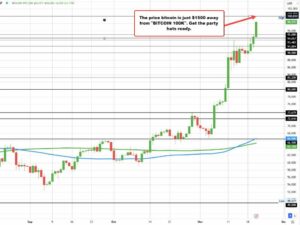Aashish Somaiyaa, CEO, White Oak Capital Management, says “as portfolio managers or AMCs any which way, we continuously keep monitoring how many days it would need us to liquidate a particular stock. How many days would it need us to liquidate say 5%, 10%, 15%, 20% of our portfolio. So, monitoring liquidity of the portfolio is an ongoing task and the regulator is just throwing in an extra bit of caution and saying that this is getting too much, maybe you just need to review all the risk parameters.”
For the last couple of days, there has been this clamour against how regulators are probably coming down on the midcap and the smallcap investments. What do you make of it? Is this something to get worried about or is this just a small nudge or are some red flags coming in from the regulators but nothing to completely derail the story in the broader markets?
Aashish Somaiyaa: I think it is only here and now. See, it is part of normal activity on a regulator’s part to work on investor protection and warn them at large. Recently the Reserve Bank of India warned lenders on unsecured lending, which was happening through fintech apps, for example. Similarly, in the last one year whenever we have seen the Association of Mutual Funds data, we have been seeing that a large part of the net inflows into equity mutual funds, sometimes as high as 30-35% of the net inflow has been going into smallcap funds and an equal number probably into even midcap funds. There is this tendency of people to chase past performance. So, if the last one-year return looks like wow, some 60-70%, then instead of being cautious, people tend to pile on and put more money into that and that can cause that space to rise. The smallcap space consists of 250 stocks, the midcap space is identified as 150 stocks and all those 250 or 150 may not be meeting people’s buying criteria, so money gets piled into fewer numbers of stocks and that can eventually cause liquidity related issues.
If you keep buying the same bunch of stocks, while right now there is an inflow, at some point in time there can be a reversal also. I think it is part of normal activity. As portfolio managers or AMCs any which way, we continuously keep monitoring how many days it would need us to liquidate a particular stock. How many days would it need us to liquidate say 5%, 10%, 15%, 20% of our portfolio. So, monitoring liquidity of the portfolio is I think an ongoing task and the regulator is just kind of throwing in an extra bit of caution and saying that this is getting too much, maybe you just need to review all the risk parameters.
Several times regulators do not need to actually take a step. Just posturing itself actually works the trick. I mean, look at how RBI does. I mean, they do not always go about cutting rates or raising rates. Just the commentary at some certain important platforms, a bit of a nudge and markets actually react and get the message. Do you think it could be the case in equity markets as well? SEBI and AMFI coming together is a nudge enough that things are not very comfortable here and we all as stakeholders including investors need to be a little cautious? Aashish Somaiyaa: Yes, I mean, look at it as a nudge. I think that is the right word. And also, I would just say that it has been nearly a year now that multiple fund houses including ourselves, when it comes to midcap space or smallcap space for instance we have been taking only systematic transactions. We have been saying we will not take big money. We have been saying we will only take SIP or systematic transfer, that too through a minimum of six instalments spread over a period of time. We ourselves have been trying to calibrate the flows at the pace at which they come. Because, see, redemption is one thing but the point is at entry if you are not taking bulk money, then that reduces pressure in case of any eventuality of redemption. So, industry has been cautious and careful. This is not like the olden times. We have been through multiple cycles. We know what type of drawdowns can happen if there is a fall in the market and further accentuated by redemption. Industry has been careful. What the regulator and what the Association of Mutual Funds is doing is just to highlight that okay we know you are doing all these steps to take liquidity, to manage liquidity, but I think for investors’ understanding please also start reporting the liquidity parameters of the portfolio on the website. Any which way in our investment committee meetings and risk management meetings, we have been discussing all these things. I think now we will just make the information public.I was under the impression that the industry would take all that liquidity parameters, etc, on a monthly basis if not even more frequently, especially in smallcap and midcap schemes. Aashish Somaiyaa: You are absolutely right. For every stock we own, we continuously compute that if we were to sell this stock, how many days it will take us to liquidate the entire stockholding. If on the other hand, what is the contribution of the top 5, top 10 investors in the portfolio, if all of them were to redeem together what is the impact on the portfolio, how many days would it take us to liquidate say 10% or 15% or 20% of the portfolio?
We even check for distributor-wise concentration, that is we have some very large distributors who are holding money for their set of investors. So, all types of concentration analysis, stock level, distributor level, investor level is done and on every parameter we check how much the portfolio is liquid, illiquid, etc. So, it has been consistently monitored. Now we just have to make sure that even investors are provided this kind of data and information that is our scheme risky on liquidity parameters.









